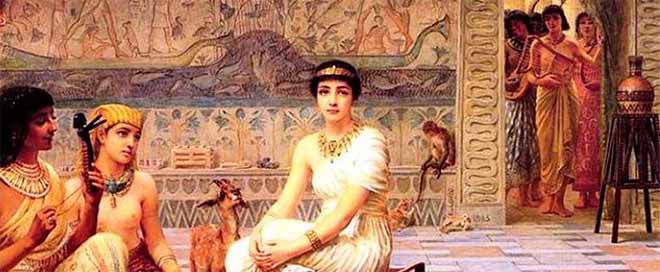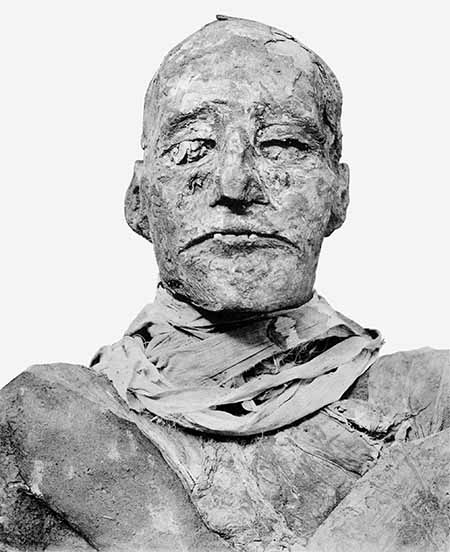Death of Pharaoh Ramses III
The Harem Conspiracy

In 1153 BC, Ramses III, the last great ruler of pharaonic Egypt, died in unknown conditions. In the months that followed, his son and heir Ramses IV tried his father's women, accused of killing him.
For the sake of his son
The account of the trial, focused on four papyri, the main one of which is preserved in the Egyptian museum of Turin (Judicial Papyrus of Turin), brings to life before our eyes an unknown institution, the harem of the pharaoh. United to a large number of women, in spite of custom, Ramses III failed to choose among them a "Great Wife" whose male child would become his normal successor. But he named one of his sons, Ramses - the future Ramses IV - to succeed him. This choice, which is based only on the preference of the pharaoh, is easily questionable. It opens the door to all intrigues, from mothers who wish to see their own offspring reign.
The harem conspiracy

At the center of the harem conspiracy is a concubine named Tiye. Tiye conceived of Ramses III a child named Pentawer. In order to put Pentawer on the throne, Tiye would've plotted the murder of pharaoh Ramses III. Skilled maneuverer, she won over to her cause, in addition to her harem companions, the director and a certain number of officials of the institution, external dignitaries such as a butler, a doctor, a steward of the priests, the commander of the troops of Kush, who is the brother of a harem woman, and finally a general. All in all, twenty-eight men and an indeterminate number of women are said to have been involved in the plot to murder Ramses III.
The arrest of the conspirators

They also resorted to magic. A conspirator, using a precious grimoire stolen from the royal library, manufactures wax figures on which he pronounces magic formulas; he then introduces them into the harem. Finally, a date is set for the assassination of the pharaoh: it must take place during The Beautiful Festival of the Valley, in the palace of Medinet Habu adjoined to the Mortuary Temple of Ramses III.
The preserved papyri do not tell us how the events unfolded, and Ramses III mummy bears no trace of any wound showing violence. Ramses IV, having judged the conspirators, suggests that the plot, if it could not impose another successor than the one chosen by Ramses III, was however fatal to the king. The harem conspiracy, in any case, was discovered and its members arrested.
Execution or suicide
The report of the trial teaches us that twelve judges, chosen by Ramses IV among the greatest personages, are charged to instruct the affair. The decision of the judges is laconic and without appeal. For each accused, the same formula comes back: "he was brought before the judges of the court; they examined his crimes; they found him guilty; they have made his punishment fall upon him. "Punishment is none other than capital punishment. At least seventeen men and six women are executed. The others, including Pentawer, Tiye's son, are "sentenced to suicide". The sentence this time is expressed as follows: "They left him where he was; he took his life. "Strangely, Tiye, quoted as the instigator of the harem conspiracy, does not appear in the lists of the accused. Maybe she killed herself at the time of the plot's failure?
Harem conspiracies in Ancient Egypt
The harem institution has secreted troubles several times in the history of pharaonic royalty. Already, around 2300 BC, more than eleven centuries before the death of pharaoh Ramses III mentioned here, King Pepi I had sentenced in the greatest secrecy a queen, whose name is not mentioned, for conspiring against him. In 1962 BC, a scenario identical to this leads to the assassination of King Amenemhat I. There are some details about the events. The women of the harem supported the son of one of them against the legitimate heir. They bribed relatives of the reigning ruler for the murder. The crime was perpetrated during the night, while Amenemhat slept, and in the absence of his appointed successor, gone to war against the Libyans. But, as in 1153, the plot failed: the anticipated return of the heir allowed him to save his crown.









































































































































































































































































































































